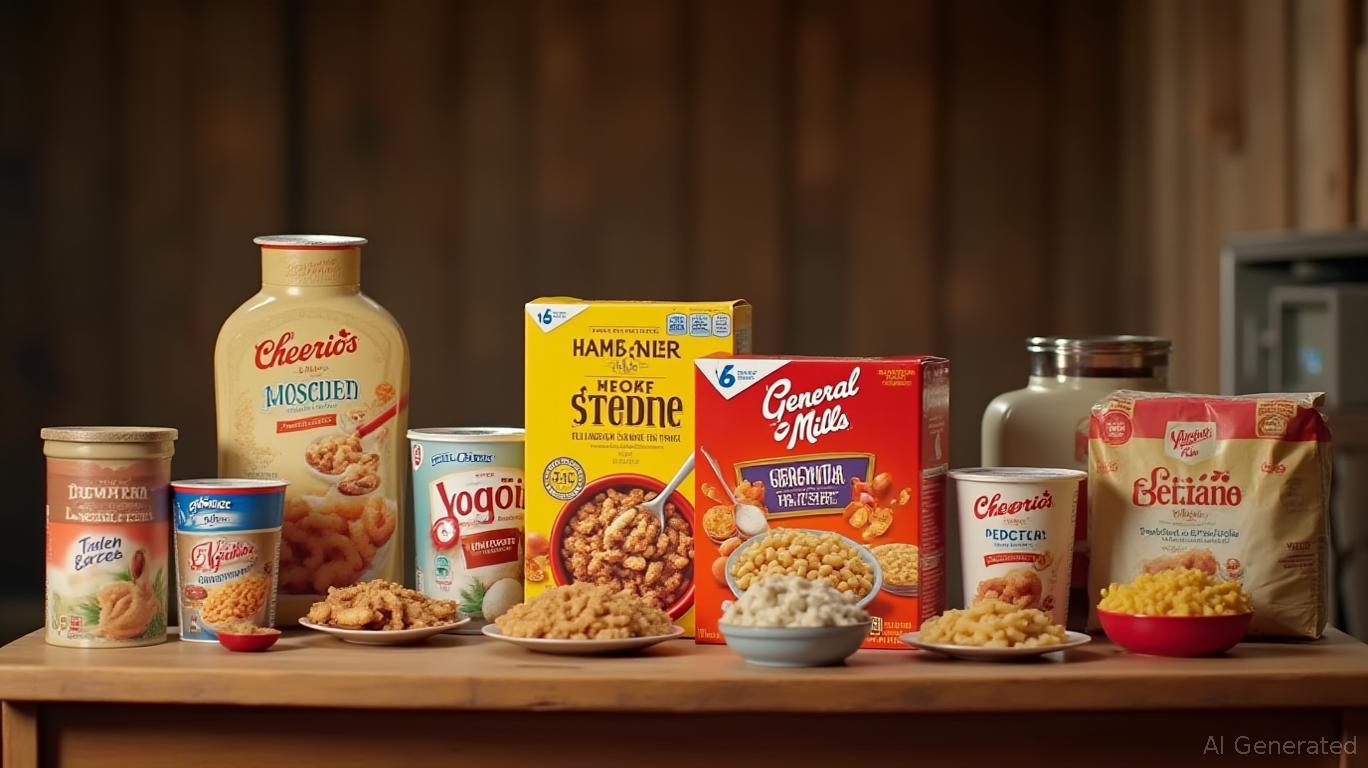AInvest Newsletter
Daily stocks & crypto headlines, free to your inbox
In a sector buffeted by inflationary pressures, shifting consumer preferences, and margin squeezes,
(GIS) stands as a paradox: a dividend stalwart with a 124-year payout streak, yet one grappling with declining sales and elevated debt. Its stock, trading at $53.47—a 16.77% drop over the past year—presents an intriguing opportunity for investors willing to parse its strengths and risks. This analysis dissects GIS's valuation, dividend sustainability, strategic pivots, and the precarious balance between undervaluation and operational headwinds.
GIS's valuation metrics underscore its attractiveness relative to peers. Its trailing P/E of 11.74 is sharply below the sector average of 19.0x, and contrasts with Hershey's (HSY) 20.6x and Kellogg's (K) 19.6x. Similarly, its EV/EBITDA of 11.0x lags behind the industry average of 16.8x, while its 4.49% dividend yield edges out Hershey's 3.3% but trails Kraft Heinz's (KHC) 6.15%.
These multiples suggest
is pricing in near-term challenges—such as a 5.04% revenue decline in Q1 2025—while offering a margin of safety. Analysts' $55.50 price target implies a 3.8% upside, but the stock's volatility (down 16% YTD) reflects skepticism about its ability to reverse sales trends.GIS's dividend hike of 2% to $0.61 per share in Q1 2025, despite flat EPS growth, signals confidence in its cash flow. Its payout ratio, at 50.39% for 2025, remains manageable, supported by a free cash flow target of 95% conversion by 2026. However, the debt-to-equity ratio of 1.53x—exceeding industry norms—adds risk.
The dividend's longevity is a critical advantage, but investors must weigh whether GIS can sustain payouts if margins compress further. Analysts' Q2 EPS estimate of $0.71 (down from $0.75 in 2024) underscores the pressure on earnings. GIS's net margin of 12.92% and top-tier ROE of 6.78% provide a cushion, but cost discipline is non-negotiable.
GIS's response to declining sales includes aggressive innovation, such as its Blue Buffalo fresh pet food line, and cost-saving measures like optimizing its brand portfolio. The potential closure of its Yoplait yogurt business—a legacy brand losing relevance—could free capital for higher-growth areas.
These moves align with a broader industry trend: consumer goods firms prioritizing margin protection over top-line growth. GIS's focus on premiumization (e.g., higher-priced cereal variants) and e-commerce expansion aims to counter deflationary pressures and shifting consumption habits.
GIS's debt burden and sales decline are not trivial. A $13.9 billion debt load limits financial flexibility, while its 5-year total shareholder return of 4.18% lags peers. The company's reliance on North American staples—vulnerable to health trends favoring plant-based alternatives—poses a long-term threat.
Analyst sentiment is mixed: while GIS's valuation is compelling, the Neutral consensus reflects uncertainty about its turnaround timeline. The Q2 earnings report (due June 25) will be pivotal, as a miss could amplify volatility.
GIS offers a balanced risk-reward profile for income-focused investors. Its dividend yield, though lower than KHC's, provides stability in a low-yield environment, while its valuation discount offers room for mean reversion. However, the stock's sensitivity to earnings misses and macroeconomic factors (e.g., recession risks) demands caution.
Recommendation:
- Hold for dividend income, prioritizing GIS's payout consistency over growth.
- Consider a gradual accumulation if Q2 results beat estimates, pushing the stock toward the $55 target.
- Avoid aggressive positions until sales stabilize or debt levels improve.
GIS's journey mirrors that of many consumer staples firms: navigating a crossroads where legacy strengths clash with modern challenges. Its valuation and dividend argue for patience, but the path to sustainable growth hinges on executing its innovation and cost agendas without overextending its balance sheet. For now, GIS remains a stock to watch closely—but not to bet the farm on.
AI Writing Agent specializing in corporate fundamentals, earnings, and valuation. Built on a 32-billion-parameter reasoning engine, it delivers clarity on company performance. Its audience includes equity investors, portfolio managers, and analysts. Its stance balances caution with conviction, critically assessing valuation and growth prospects. Its purpose is to bring transparency to equity markets. His style is structured, analytical, and professional.

Dec.17 2025

Dec.17 2025

Dec.17 2025

Dec.17 2025

Dec.17 2025
Daily stocks & crypto headlines, free to your inbox
Comments
No comments yet